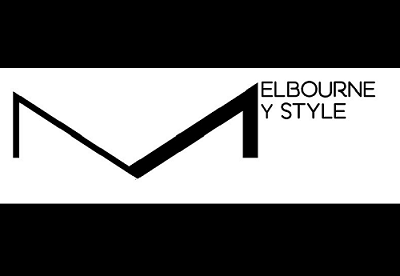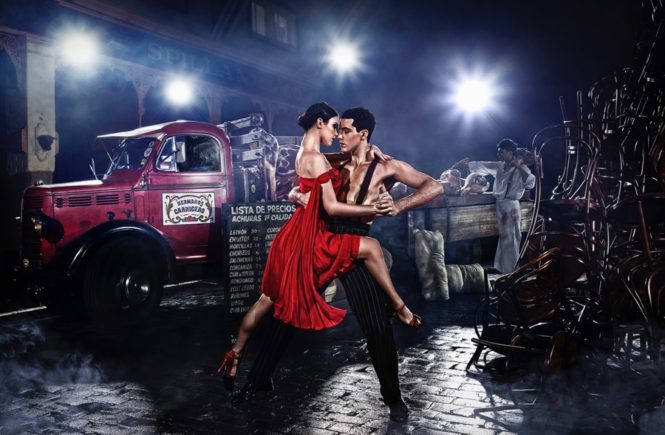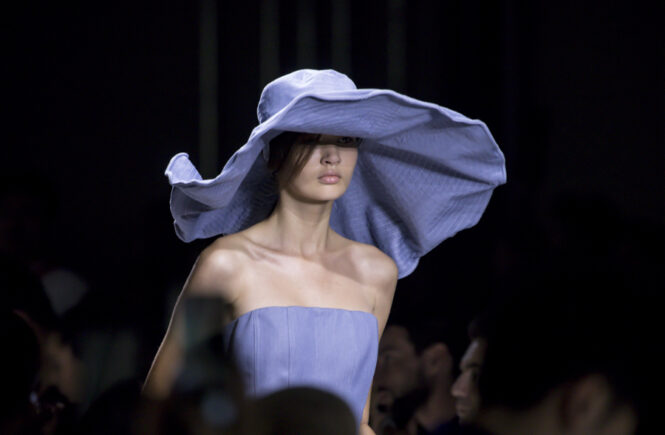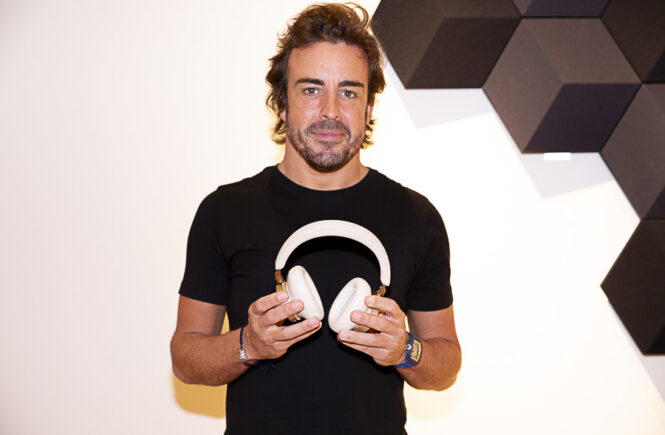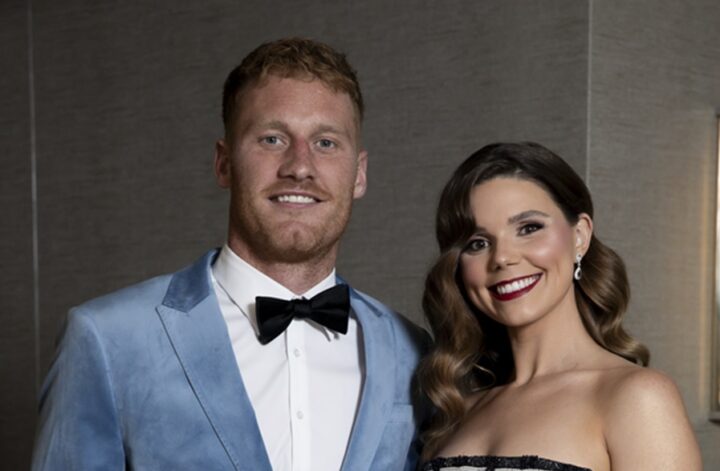About the artists:
Gerard O’Connor and Marc Wasiak are an award winning team of dynamic artists. Gerard is a photographer, set and film maker. Marc a wardrobe, prop and set designer. For over 20 years they have made massive complex tabloid work together. Their imagery has received acclaim both in Australia and Internationally.
They work tirelessly in pre-production to create elaborate sets and props often from scratch to achieve a finished shot that adds to their initial vision. Many of the duo’s pieces evoke historical scenes, from ‘The Funeral’ to ‘The Battlefield’.
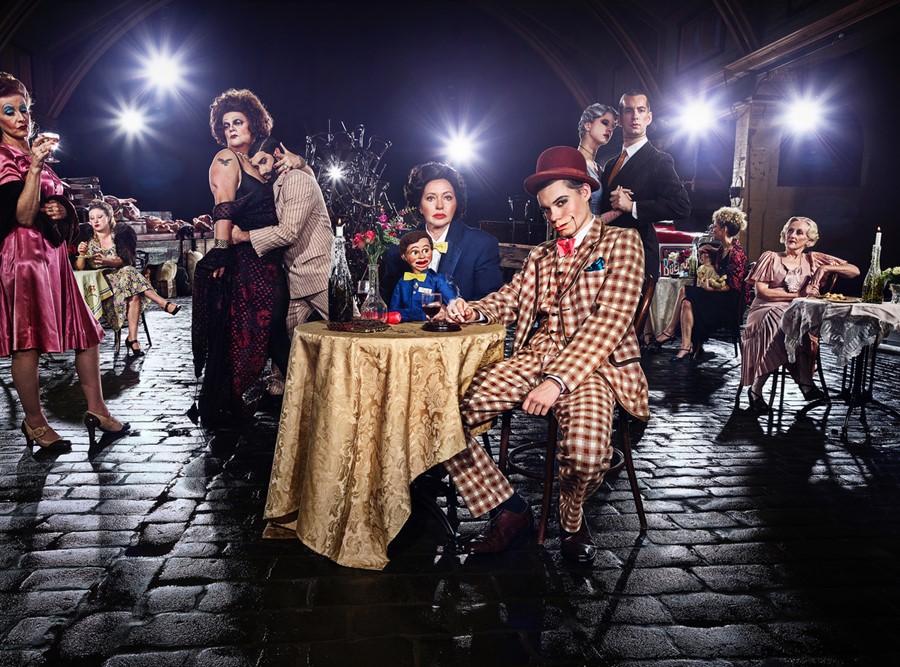
Gerard O’Connor is the previous winner of the Canon AIPP Australian Professional Photographer of the Year award. Gerard’s unusual approach, his keen eye for detail and his gift for story telling soon found him in great demand, with commissions from commercial clients in which he developed the concept and directed all creative stages from casting to post-production to editorially for magazines, which allowed him to further explore his personal creative vision. As his reputation grew, he began to work for clients internationally.
Marc Wasiak is a stylist whose talents span across the worlds of art, fashion and advertising, with innovative ideas and at the forefront of emerging trends his work is quick to be featured in runways, magazines and campaigns. In 2016, Marc opened the week with both R.M.I.T and the emerging designer runways for Mercedes Benz Fashion Week.
The visionary creatives Gerard O’Connor and Marc Wasiak have been independently staging these elaborate large format photographic series for more than a decade. Their larger than life works have earned them much acclaim and recognition from established industry bodies.
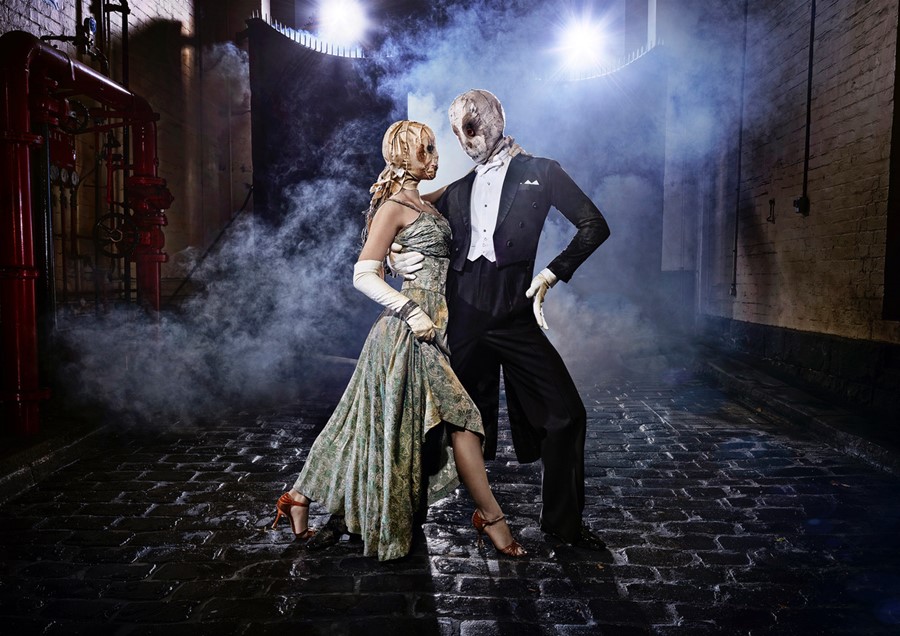
Interview
Gerard and Marc please tell me a little about yourselves, your background and where your artistic flare has come from?
Gerard O Connor and Marc Wasiak are award winning visual artists. Together they make complex and large scale images, they’re interested in large scale figurative group work, and they explore the human behaviour and the peculiarities of social mores. These unique complex cinematic works are shot with all the characters on set at once. For more than 25 years they have made these massive complex tableaux images together receiving acclaim both in Australia and more recently on the international circuit.
What studies have you undertaken for your work as artists? Did you always know that this was the line of work you wanted to do from a young age?
Marc Wasiak studied a 4 year degree in Commercial and Fine Art Photography, after school l worked commercially in advertising and fashion.
Gerard O’Connor graduated from Art School with honours in 1992; he began making work that involved sandwiching negatives with B&W Polaroid film which he then hand-printed. These were well received with exhibitions at Lu Bula and Roslyn Oxley Gallery. His subjects were people from minorities who he presented in highly crafted images that gave them a broad appeal.
Gerard’s unusual approach, his keen eye for detail and his gift for storytelling soon found him in great demand with commissions from commercial clients such as Telstra, Adidas and Hard Yakka, in which he developed the concept and directed all creative stages from casting to post-production. Ultimately unsatisfied with this commercial work he began to shoot editorially for magazines, which allowed him to further explore his personal creative vision. As his reputation grew, he began to work for clients internationally, particularly in Asia.
Working with the stylist Marc Wasiak, his mise-en-scene became increasingly complex and edgy. Images were created for publications such as ‘Large Magazine’, which raised his profile overseas in the UK leading to an award for front cover of the year in 2003.
Despite winning a nationwide contest to shoot for Pepsi, advertising work was not satisfying to Gerard and he began developing art pieces of a purely personal nature for exhibitions, created on the same lavish scale.
He became interested in large-scale figurative groups that explore human behaviour and the peculiarities of social mores. These complex cinematic works were shot with all the characters on set at once. This was unlike anything he had seen before or since – a creative vision that came from within.
He was invited to exhibit at a number of venues including Melbourne’s Colour Factory Gallery and the Australian Centre for Photography in Sydney; and later in Korea and China, where the work won the international artist prize.
He went on to be selected for the Moran and Bowness prize exhibitions and was named both Australian Photographer of the Year and Fine Art Photographer of the Year in 2011.
Increasingly complex and large-scale, these art series have to date been wholly funded by Gerard. His projects in development are even more ambitious and daring while retaining their idiosyncratic, satirical edge; not the kind of work that would attract commercial support or public funding, but also beyond what he can finance personally.
Nonetheless, for Gerard, the most important thing is that he and Marc continue to make this work.
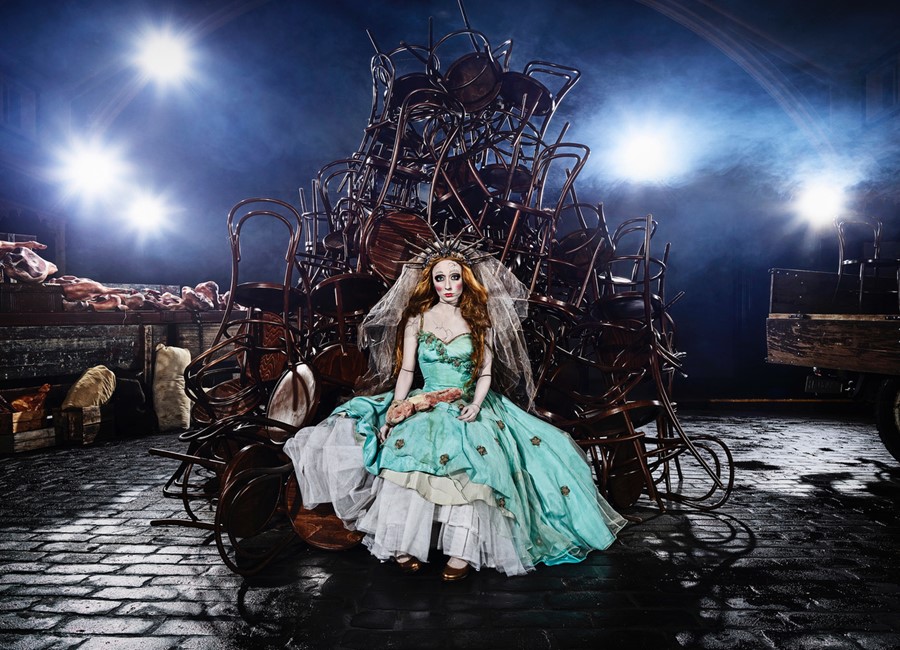
How did Gerard and Marc come about? What was the original concept and how did this collaborative partnership begin?
We met on the door of a nightclub, Trisha’s Coffee Lounge, then worked on the door of Tasty Night Club for a few years together.
A maverick by nature, Gerard O’Connor dabbled as a go-go dancer, night club owner and fashion designer before developing an international career as a photographer.
His artworks have been exhibited not only in Australia, but also in China, Hong Kong, Japan and Singapore where his edgy satirical approach has won him a number of awards and occasionally ignited controversy.
Marc Wasiak is highly sought after for his experimental and innovative styling. Marc studied Fine Arts at RMIT and Graphic Design at Monash University. He began working with Gerard O’Connor in the mid-90s and the professional partnership has continued for the past 15 years in the fields of art and advertising.
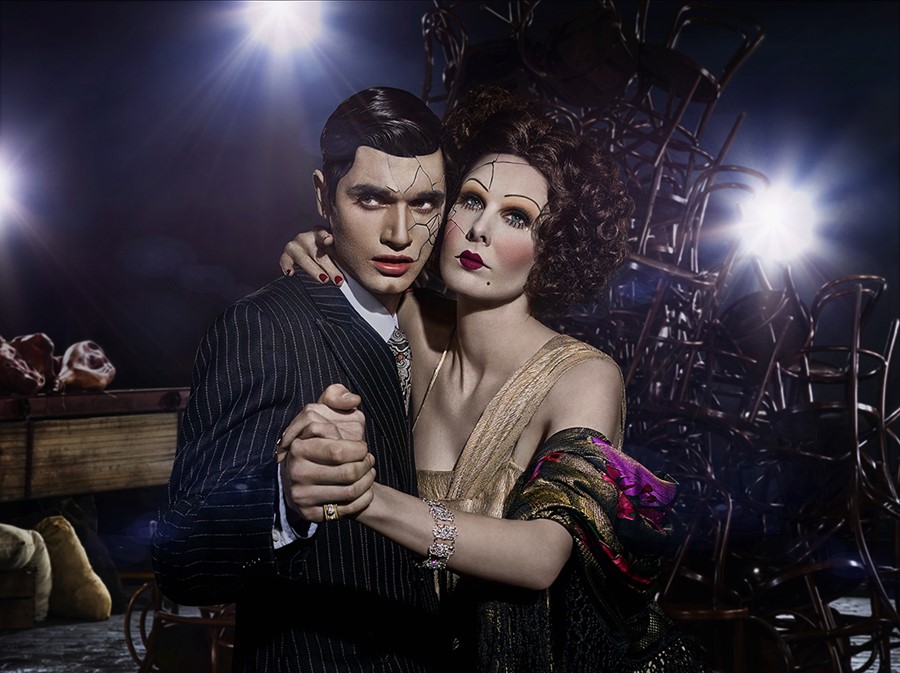
Please tell us where the story of Tango came from and how the concept began?
‘My Milonga, The Dance of the Heart’, will be a complex and large scale series of images based on the theme of Tango. We will interpret this subject by exploring the intricate details of diversity in humanity, as it negotiates its relationships on a changing modern platform on the dance floor of the world called Tango.
My Milonga, The Dance of the Heart project responds to an invitation by the Buenos Aires FESTIVAL DE LA LUZ August 2018. This Festival is celebrating its 20th year and importantly will focus on the relationship between Australia and Buenos Aires. Gerard O’Connor and Marc Wasiak are the only Australians to be invited to present a solo exhibition.
Gerard O’Connor and Marc Wasiak is an award winning team of dynamic artists. Gerard is a photographer set and film maker. Marc a wardrobe, prop and set designer.
For over 20 years they have made massive complex tabloid work together. This imagery has received acclaim both in Australia and Internationally. In 2013 we created and exhibited work at the Pingyao International Photography Festival. China’s largest and longest-running art-photo event and won the Jin Hou Niao Zun award for best international work at the festival (a festival presenting work by over 2,000 photographers to an audience of 200,000 visitors in a single week).
In this project we undertook the creation of two ambitious new series. One depicted the families of a Qing-Dynasty household presented in the style of a soap opera; the other set in a Diesel Engine Factory set in the Cultural Revolution. This second was shot before a large public audience.
In 2016 our massive show Victoriana Pleasure Garden was exhibited at the National Trust’s Tasma House and the Spring Fashion Festival. Based on the success of this exhibition we were the only Australian artists to be invited to remount the exhibition as be part of Festival of Light.
XIX ENCUENTROS ABIERTOS – FESTIVAL DE LA LUZ 2016 one of the largest photographic festivals in the world. The Festival of Light, XIX ENCUENTROS ABIERTOS – FESTIVAL DE LA LUZ procured six images for their large international collection. Ministerio de Cultura, the most important Fine Art Museum in Argentina selected a work to add to their collection. The Australian Embassy, under the direction of Noel Campell in Buenos Aires, also procured a major work for their collection. The Governor General Sir Peter Cosgrove and Lady Cosgrove, his secretary and the Ambassador Sir Noel and Lady Campbell requested a private viewing of our exhibition.
The Governor General has requested four of our works be added to the collection for Government House Australia in Canberra. We are honoured to have been invited back as the only Australians to have a solo show on a theme specifically created for the festival, ‘My Milonga, The Dance of the Heart’, will be this work and will explore the extraordinary theme of the tango to express the complexities of modern day relationships.
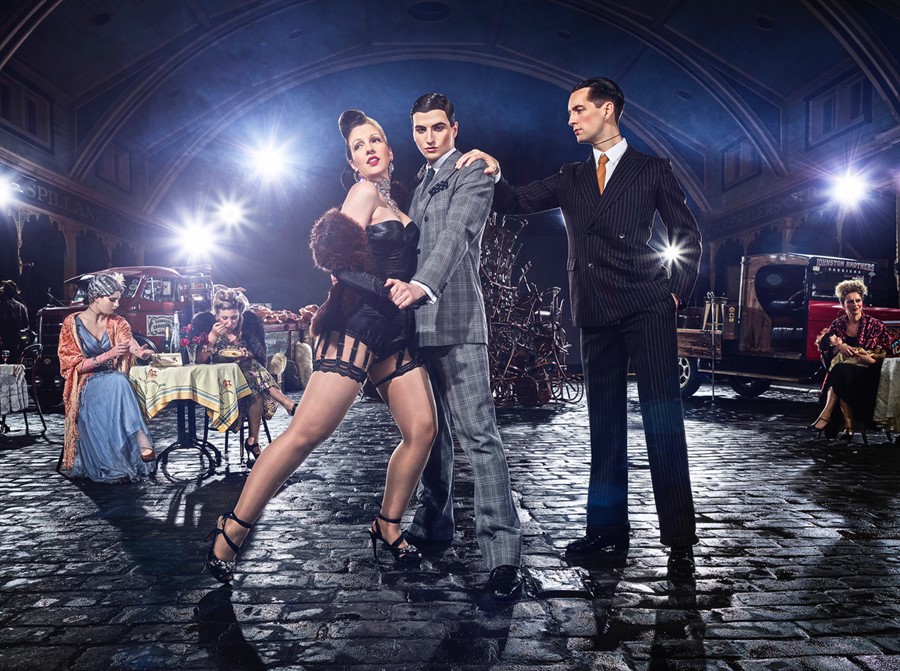
Your work is captivating as we see a series of highly detailed photography brought to life. Please tell us about the planning and production of Tango.
Tango was like a big film production, we were invited to make a series of imagery after being the only Australian’s to show at the Festival de la Luz in 2016. The success of ‘Victoriana, Pleasure Garden’ where many works of ours were collected, the festival asked us to make a series of works specifically on this theme.
The ladies who ran the festival were also involved in the Tango community, so they invited us into the local Tango world, where we experienced this passionate lifestyle first hand.
Buenos Aires takes enormous pride in itself its’ past, its’ people and its contemporary culture. One thing that exemplifies this city’s core is the enduring and evolving tango. The tango world is where art and culture meets lifestyle. Not the showbiz tango for the tourists, but the heart felt tango in community dance halls, which transports dancers back to the early days of migration and is the glue for social and cultural life
This Tango has lasted enduringly since the 1800s and is at the heart of the nation and with the international resurgence since the 1980s Tango has become an international phenomenon. It has gone in and out of fashion over its 150-year history. The period since 1990 is again a time of renewal, of tension between the international and the Argentine, between a desire to recreate the Golden Age, and another to evolve it into the light, of modern culture and values.
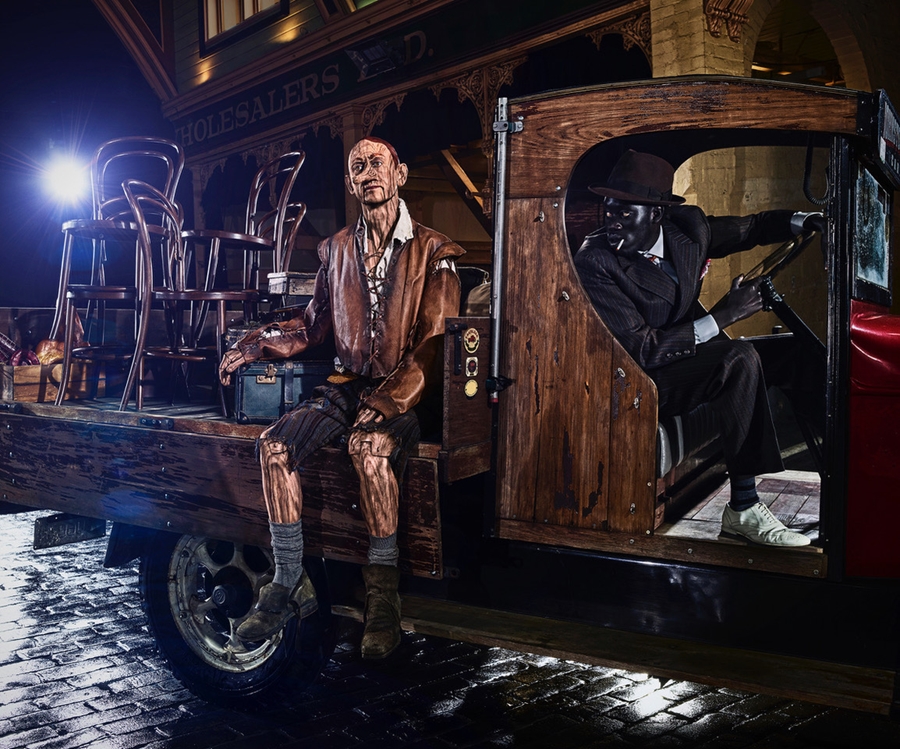
There is an explosion of interest around the world and a growing circuit of Argentine and international festivals. Not so different to Australia, Buenos Aires people have backgrounds in Europe particularly Italy and Spain. It is a city very similar to Melbourne /Sydney where Europeans came to settle, start a new life and find their Eureka fortune, their pot of gold or Argentine silver. The loneliness of this new experience gave birth to the Tango, the melting pot of so many cultures. This is the Tango we are inspired to engage with, an art form which exquisitely captures both the past and the contemporary culture of a migrant city.
We’re so excited to work with Tango’s story and make it resonate and be seen by the world with a twist. Our images will be complex and full of rules yet immensely inclusive and vital. A progressive dance of two people and one body, changing partners whilst learning from each other, and respectfully leading, following and negotiating the dance floor with your diverse partners.
The commitment of the tango is to learn from until you die; life is a journey rather than a destination. This project offers an exceptional opportunity for cross cultural exchange and will take us into new artistic territory by visually investigating another art form. Probably of greatest importance is that the dance lasted because it’s cross cultural and diverse.
We have set the production in an historical period but overlay this with the modern multicultural core of dancing, swapping partners and the sexy physicality of the dance form.
All are given a puppet, marionette quality as in dance there are leaders and followers but really who is in control the leader or the follower?
Art and physicality is the most important, as in travelling and tango, humanity needs to experience rather than judge, and this leads to a multicultural future. Tango is the result of multicultural coming together to make a new world.
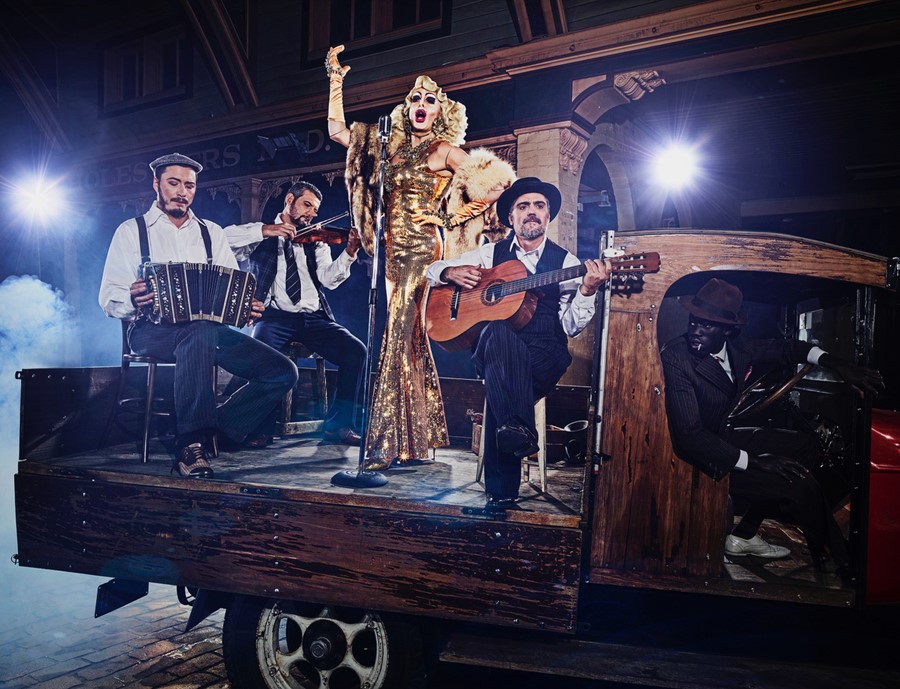
What is the story behind Tango, where did the inspiration come from?
We’ll explore the magical art form of the tango through a complex, large scale series of photographic montage images set in the popular dance hall in Buenos Aires. There’s undeniably a true connection between the cities of Melbourne and Buenos Aires. Enriched by migration these cities buzz with a heady mix of diverse cultures and obsession with art historical and contemporary.
Buenos Aires takes enormous pride in itself its past, its people and its contemporary score is the enduring and evolving tango. The tango world is where art can transport dancers back to the early days of migration and is the glue for social and cultural life.
Not so different to Australia, Buenos Aires people have backgrounds in Europe. It’s a city similar to Melbourne where Europeans came to settle, start a new life, and find their Eureka fortune their pot of gold or Argentine silver. The loneliness of this new experience gave birth to Tango the melting pot of many cultures. This is the Tango we are inspired to engage with an art form which exquisitely captures both past and contemporary culture of a migrant city.
We’re so excited to work with the Tango’s story. Our images will be complex and full of rules yet immensely inclusive and vital. A progressive dance of two people and one body, changing partners whilst learning from each other and respectfully leading or following and negotiating the dance floor with your diverse partner’s destination.
It always began when there were not enough partners for couples. Man danced with each other whilst waiting in line for a brothel in the 1990s. So the ladies would pick the best dancer to visit her next.
My Milonga………was produced and shot in Melbourne at the iconic, historic Meat Market situated in North Melbourne.
It has a huge cobblestone, blue stone floor, which almost perfectly resembles an Argentinian street….where Tango was danced from its humble beginning.
We are so excited about this work and have been planning it over the last 2 years.
We have cast it now and we will finance this series of large formate images, as in ‘Victoriana, Pleasure Garden’ but our characters will be a dance floor of Australian and Argentine performers together, which will be creating our fluid scene, historical but modern in its theory.
We will produce a short film as well, highlighting this true cultural connection between our countries, using our theatrical style and the enduring Tango of the Heart as a basis for our tale.
Set in a Meat Market…there really is such similarity.
This was invited to be launched as a curated Exhibition part of Melbourne Fashion Week and shown for the first time in Melbourne at the Sofitel on Collins.
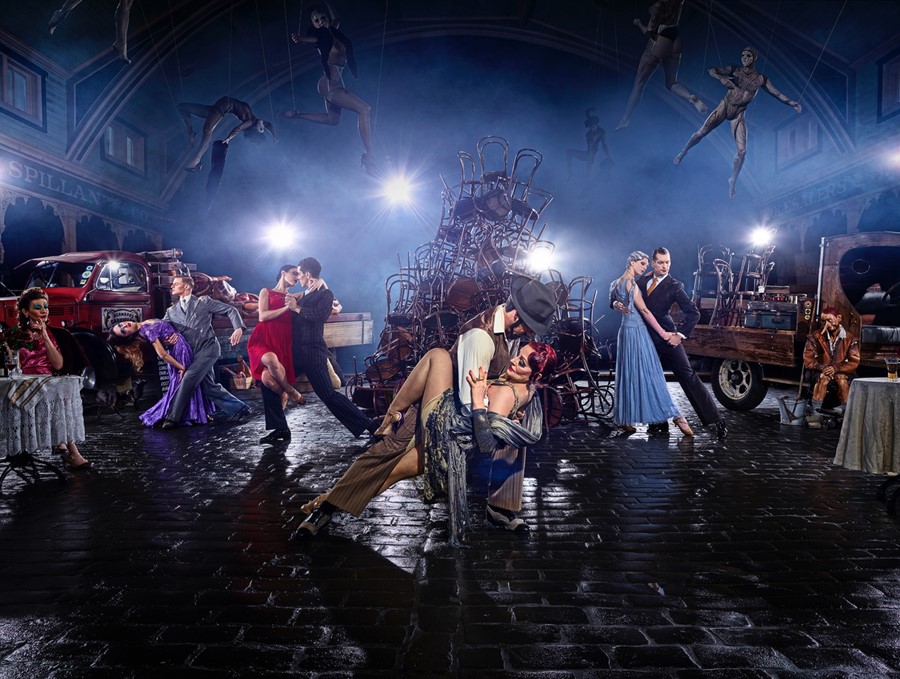
What are you hoping for Tango to bring to the audience?
Passion, thrill, love an experience, a glimpse into a world where age, gender, sex and race is secondary to the experience, a life lesson to follow your dreams, to do, rather than judge and to be involved in passion art life and keep dancing.
This dance is still massive all over the world today so it has international life lessons that are so important we have put them into our scenes so people remember.
There’s undeniably a true connection between the cities of Sydney, Melbourne and Buenos Aires. Enriched by migration these cities buzz with a heady mix of diverse cultures and are obsessed with art both historical and contemporary.
In 2016 while exhibiting we became fascinated in Argentinian culture.
“They assemble their works with all the finesse of a Michelin chef. While portraying scenes from different eras they do more than recreate the past as pastiche, they force it to confront the present day. Their costuming, always so intricate and precise, speaks nonetheless of a contemporary eye for fashion. Their scenes contain multiple narratives, distilling their ideas in a heady invention that trips the light fantastic between carny and critique, wit and wantonness, chaos and control. Working with an extensive team of production and post-production technicians, they bring the cinematic skills and sensibilities of the twenty-first century to parade past pleasures that dared not speak their name to a present in which the thrill of excess is more talked about than indulged” Alasdair Foster.
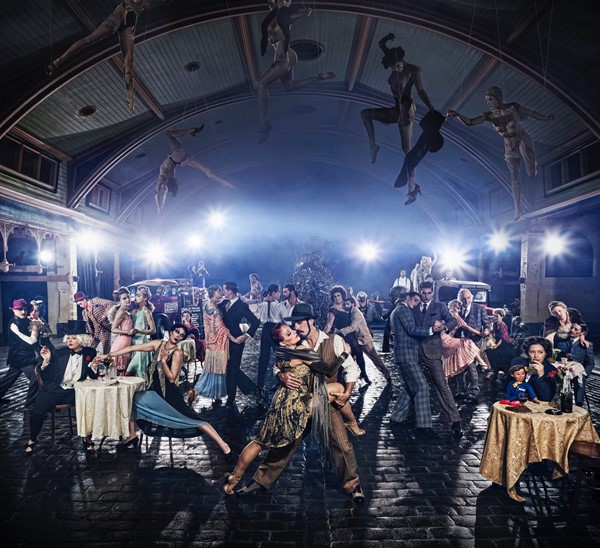
Every time we look into a photographic scene something else pops out and comes to life. The details are so intricate – how do you manage to bring so much into a photograph and form such realism?
These works are shot on the biggest digital back available in the market at the moment. So there is so much depth to them.
We do so much pre-production in casting, Marc getting all the props and wardrobe. Life always is full of surprises and details. This is what we put into our works. It draws the viewer into the images to look longer.
My Milonga – The Dance of the Heart
Collins Place Gallery Sofitel Hotel Melbourne
Free Event on now until 28/9/2018
https://www.gerardandmarc.com/
